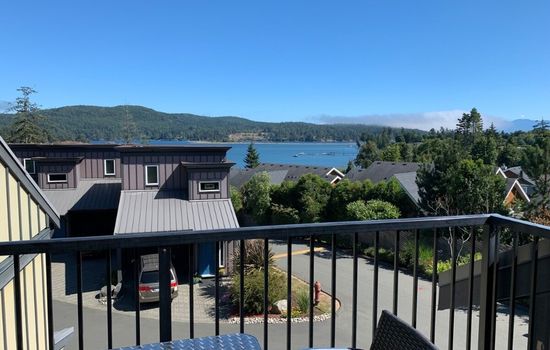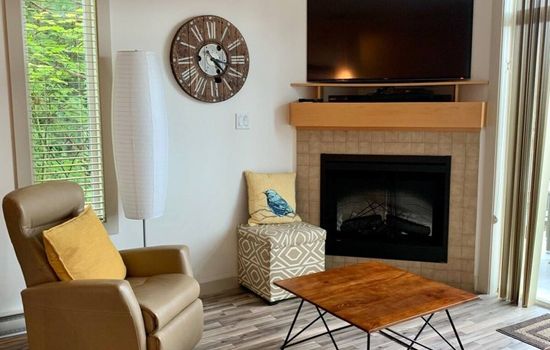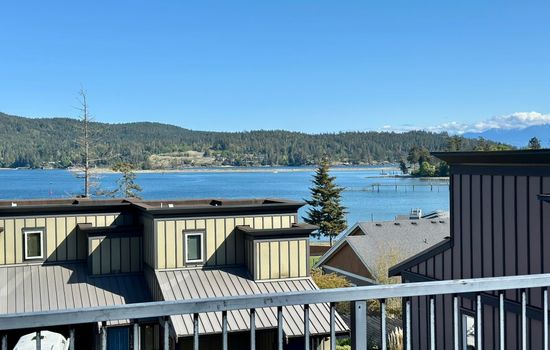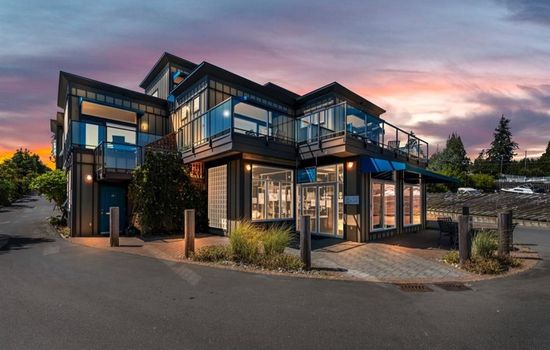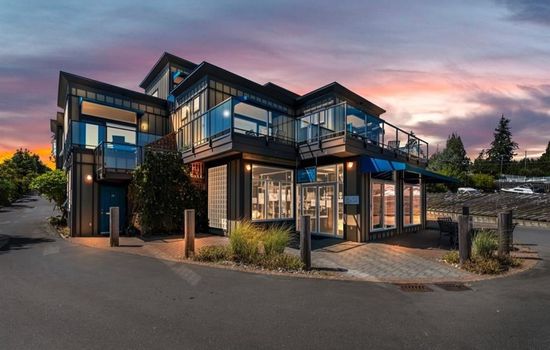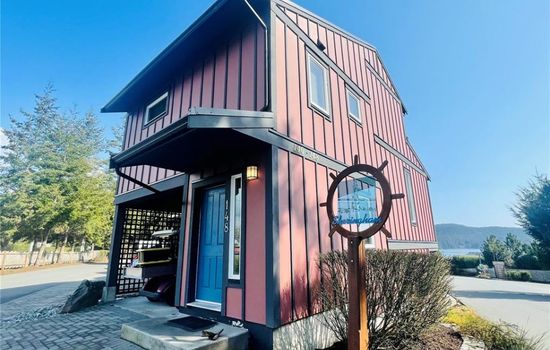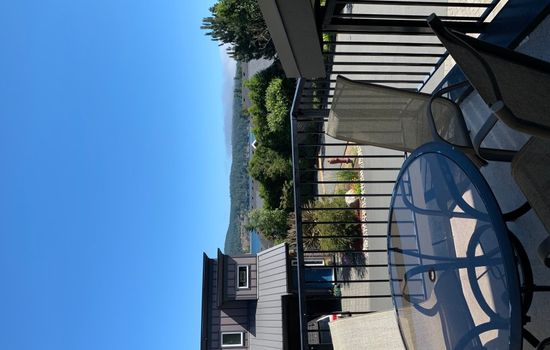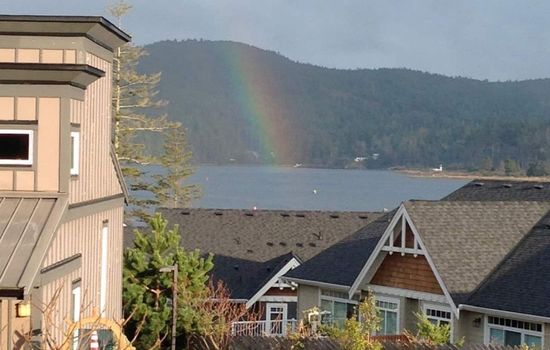The San Juan Islands National Monument office is open from 8:30 AM to 4:00 PM, but this does not pertain to the visitor centers of the San Juan Island National Historical Park. For the American Camp Visitor Center, it is open from 10 AM to 3 PM, Thursday through Monday, starting March 6, 2025. The English Camp Visitor Center will reopen in May 2025.
There is no entrance fee at San Juan Islands National Monument, except for campsites.
From Seattle, take I-5 N to Anacortes, then board the ferry to this enchanting archipelago, where pristine shores and wildlife await.
Parking at San Juan Islands National Monument is largely managed through nearby facilities. For cars and RVs, park at the Anacortes ferry terminal or use campsites like Odlin County Park, which accommodates RVs up to 30 feet. No overnight parking fees at monument sites, but campsites may have fees. Motorcycles can use the same parking areas as cars.
Accessibility & permits
Emergency
- Cell service availability:Partial
Information not accurate?
Help us improve by making a suggestion.
In the heart of the Salish Sea, the San Juan Islands National Monument presents a tapestry of contrasts, where dense forests emerge from the ocean’s edge and distant snow-capped peaks frame the rugged shoreline. Established on March 25, 2013, by President Barack Obama, this national monument protects approximately 1,000 acres of Bureau of Land Management land, scattered across 75 distinct sites within the San Juan Islands.
Here, the landscape is a mosaic of rocky beaches, quiet woodlands, and historic lighthouses, including the iconic Cattle Point Lighthouse. The diverse habitats are a refuge for an array of wildlife, such as orca whales, which can be spotted at Turn Point, and the island marbled butterfly, once believed to be extinct.
For the adventurous, sea kayaking to Blind Island or hiking the trails at Iceberg Point on Lopez Island offer breathtaking views of the shoreline. Watmough Bay, a secluded and protected area on Lopez Island, is perfect for a day trip, where visitors can kayak, hike, or simply enjoy a picnic amidst the serene natural beauty.
The islands are steeped in history, with archaeological sites of the Coast Salish peoples and relics of early European American settlers. As the seasons change, the islands transform; spring brings blooming wildflowers, summer offers warm days ideal for whale watching, and autumn paints the landscape with vibrant hues.
Local outfitters provide guided tours and equipment rentals, making it easy to explore the monument’s many wonders. For those seeking a deeper connection with the area, ranger-led tours and seasonal festivals offer a rich cultural experience. Whether you are drawn to the maritime heritage, the vibrant biodiversity, or the simple allure of untouched nature, the San Juan Islands National Monument is a destination that promises an immersive and unforgettable journey.
- Area (mi²)
- 1.6
- Annual visitors
- 301 858
- Established year
- 2013
Top 3 Facts about San Juan Islands National Monument
The island marbled butterfly, once thought to be extinct, finds refuge here, highlighting the diverse habitats that support countless species of mammals, birds, and insects in this unique ecosystem.
In this serene archipelago, bald eagles soar overhead, while black oystercatchers and pigeon guillemots inhabit the rugged shores. Rhinoceros auklets and marbled murrelets dive into the surrounding seas, home to harbor seals, Steller sea lions, and minke whales. On land, Columbia Black Tail Deer roam, and Western Bluebirds, recently restored, flit through the dense foliage. This haven is a spectacle of diverse wildlife, inviting you to witness its natural beauty up close.
In the Salish Sea, crystal-clear waters lap against rugged islands, where diverse habitats support the island marbled butterfly, once thought extinct. The landscape is dotted with four historic lighthouses and archaeological sites of the Coast Salish peoples, set against a backdrop of temperate woodlands and native prairies. Here, the sea meets the sky in a kaleidoscope of blues, with the surrounding waters home to orca whales and a myriad of marine life.
Family programs
- Junior Ranger
- Family Camping & Overnight
- Volunteer & Stewardship
Travel Tips
Plan Ahead
Plan a few days to explore, especially during summer for guided walks and tours. Use the ferry system, park at designated areas, and visit the visitor center first. Anticipate rocky terrain, plan for rests, and pack meals as options are limited. Attend a ranger-led program for a immersive experience.
Pack Appropriately
Pack waterproof hiking boots, layered clothing, and a daypack with a rain cover to handle unpredictable weather. Bring a reusable water bottle and a multi-tool for outdoor readiness. For longer stays, include a tent, sleep system, and insect repellent.
Respect Wildlife
Maintain a 200-yard distance from wildlife habitats, especially during breeding and nesting seasons. Avoid feeding or approaching animals, and stay on designated trails to protect fragile ecosystems. Respect marine life by cautious and quiet approaches, limiting viewing time to 30 minutes.
Stay Informed
Stay informed about weather, fire restrictions, and park rules. Exercise caution on trails, near ledges, and around water. For emergencies, call 911 or park authorities at 360-378-2240. Follow signs and stay on marked paths to ensure a safe adventure.
Seasons
Spring brings mild temperatures (53-63°F) and fewer rainy days. Enjoy blooming wildflowers, farmers’ markets starting in March, and whale watching from May. Ideal for hiking, biking, and kayaking amidst fresh seafood and local art.
Summer brings mild temperatures (60s-70s°F) and sunny days, ideal for hiking, kayaking, and whale watching. August’s San Juan County Fair offers live entertainment and local flair. Perfect for outdoor enthusiasts seeking unique island experiences.
Experience autumn’s vibrant foliage and crisp air, with temperatures in the 50s to 60s. Enjoy the Savor the San Juans celebration, featuring farm tours, wine tastings, and the Friday Harbor Film Festival, all set against a backdrop of golden hues and occasional sunny days. Ideal for a serene, culturally rich getaway.
Experience mild winter charm from December to February with daytime temperatures in the 46-48°F range. Short days, occasional nor’easters, and rare snow make for a unique, serene escape from colder climates. Ideal for those seeking tranquility and natural beauty.
Information not accurate?
Help us improve by making a suggestion.
Where to stay
Frequently Asked Questions
Ready to dive into what San Juan Islands National Monument has to offer? Let’s tackle some of the burning questions you might have as you plan your visit!
-
The closest city to the San Juan Islands is Friday Harbor, which is located on San Juan Island in Northwestern Washington State. Friday Harbor is about 90 miles north of Seattle.
-
Dogs must be on a leash no longer than 6 feet at all times. Retractable leashes that extend beyond 6 feet are not allowed. This rule applies to trails, roads, parking lots, and picnic areas.
-
Parking is not free; it requires a Discover Pass, which is $10 for the day or $30 for an annual pass, as part of the Washington State Parks system.
-
You can hike on many trails, visit several beaches, and engage in ethical wildlife viewing to see foxes, deer, and marine mammals. Kayaking and biking are also popular ways to explore the area. Additionally, you can go tide pooling, forage for local plants, and have a picnic while taking in the scenic views.

